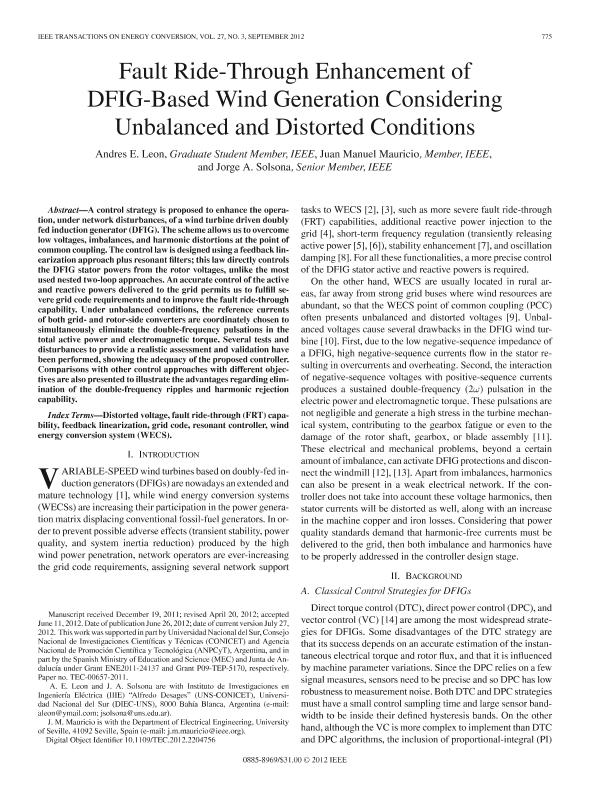Artículo
Fault Ride-Through Enhancement of DFIG-Based Wind Generation considering Unbalanced and Distorted Conditions
Fecha de publicación:
09/2012
Editorial:
Institute of Electrical and Electronics Engineers
Revista:
Ieee Transactions On Energy Conversion
ISSN:
0885-8969
Idioma:
Inglés
Tipo de recurso:
Artículo publicado
Clasificación temática:
Resumen
A control strategy is proposed to enhance the operation, under network disturbances, of a wind turbine driven doubly fed induction generator (DFIG). The scheme allows us to overcome low voltages, imbalances, and harmonic distortions at the point of common coupling. The control law is designed using a feedback linearization approach plus resonant filters; this law directly controls the DFIG stator powers from the rotor voltages, unlike the most used nested two-loop approaches. An accurate control of the active and reactive powers delivered to the grid permits us to fulfill severe grid code requirements and to improve the fault ride-through capability. Under unbalanced conditions, the reference currents of both grid- and rotor-side converters are coordinately chosen to simultaneously eliminate the double-frequency pulsations in the total active power and electromagnetic torque. Several tests and disturbances to provide a realistic assessment and validation have been performed, showing the adequacy of the proposed controller. Comparisons with other control approaches with different objectives are also presented to illustrate the advantages regarding elimination of the double-frequency ripples and harmonic rejection capability.
Archivos asociados
Licencia
Identificadores
Colecciones
Articulos(IIIE)
Articulos de INST.DE INVEST.EN ING.ELECTRICA "A.DESAGES"
Articulos de INST.DE INVEST.EN ING.ELECTRICA "A.DESAGES"
Citación
Leon, Enrique Andres; Mauricio, Juan Manuel; Solsona, Jorge Alberto; Fault Ride-Through Enhancement of DFIG-Based Wind Generation considering Unbalanced and Distorted Conditions; Institute of Electrical and Electronics Engineers; Ieee Transactions On Energy Conversion; 27; 3; 9-2012; 775-783
Compartir




